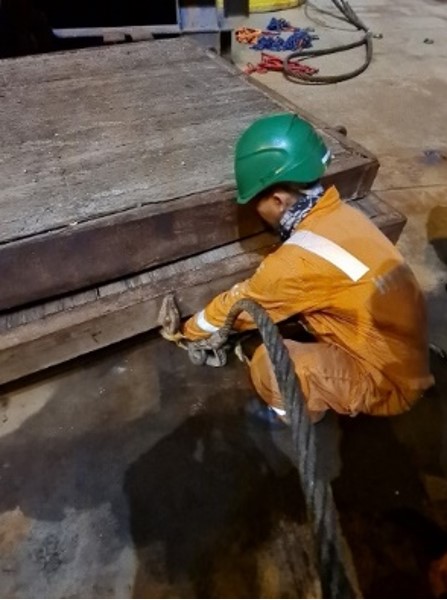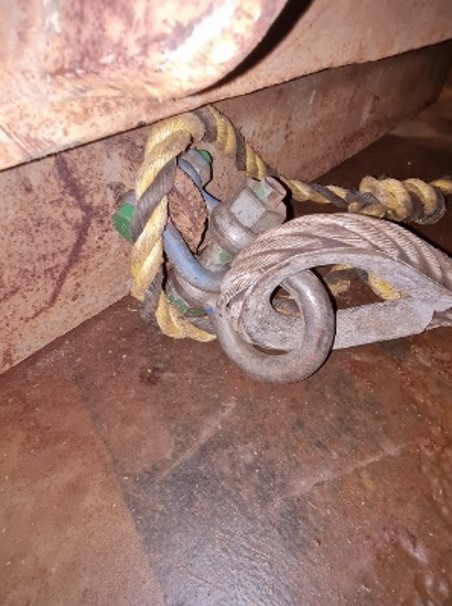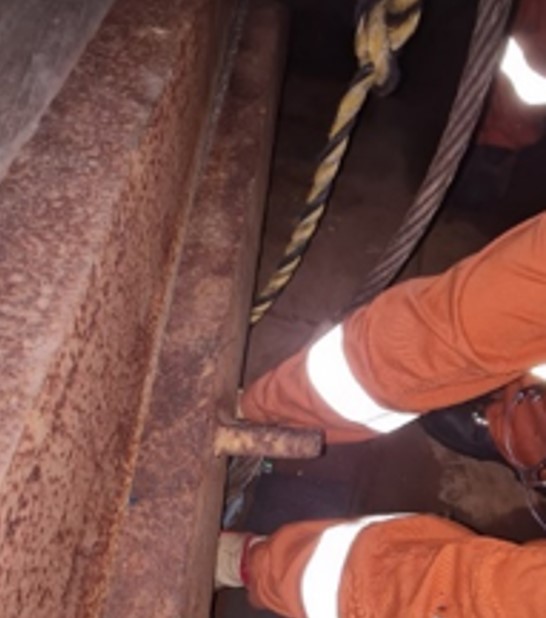Riggers injured while disconnecting rigging
What happened
Three riggers were injured whilst removing rigging from a load of timber pads after they had been backloaded from the vessel to a cargo barge. The barge and vessel were located nearshore in a sheltered location.
The incident occurred when the load was lowered down from the vessel to the deck of the cargo barge. The load had been landed, but needed some adjustment to get it exactly in the right place. To do this the rigger foreman instructed the crane operator to lift the pads slightly then lower them again to the correct location. The crane operator was then instructed to slacken the slings so that they, together with the shackles connecting them to the lifting eye, could be removed from the load and the slings returned to the vessel.
While the riggers were in the process of disconnecting the shackle there was an unexpected movement of both the barge and vessel which caused the slings to tension up. This resulted in one riggers being struck by one of the slings on his arm and the other two riggers being struck by the load on their hands.



What went wrong
Investigation revealed that:
- The riggers started disconnecting the shackles before there was sufficient slack in the slings to compensate for the motions of both vessels;
- The riggers started disconnecting the shackles before they were given the instruction from the rigger foreman that it was safe to do so;
- The rigger foreman did not instruct the crane operator to pay out more slack to compensate for unexpected barge / vessel movements.
How to stop it happening again – action
- Be aware of the additional risks created by separate vessel motions when conducting lifting operations at sea, and take additional steps to take such motion into account e.g. pay out more slack;
- Wait for it….always wait for the instruction to start the task from your supervisor, even if you know exactly what your role is;
- Consider leaving the rigging arrangement in place where possible. This will eliminate the risk of injury as nobody will be required to disconnect anything.
Members may wish to refer to:
Safety Event
Published: 4 May 2022
Download: IMCA SF 11/22
IMCA Safety Flashes
Submit a Report
IMCA Safety Flashes summarise key safety matters and incidents, allowing lessons to be more easily learnt for the benefit of all. The effectiveness of the IMCA Safety Flash system depends on Members sharing information and so avoiding repeat incidents. Please consider adding [email protected] to your internal distribution list for safety alerts or manually submitting information on incidents you consider may be relevant. All information is anonymised or sanitised, as appropriate.
IMCA’s store terms and conditions (https://www.imca-int.com/legal-notices/terms/) apply to all downloads from IMCA’s website, including this document.
IMCA makes every effort to ensure the accuracy and reliability of the data contained in the documents it publishes, but IMCA shall not be liable for any guidance and/or recommendation and/or statement herein contained. The information contained in this document does not fulfil or replace any individual’s or Member's legal, regulatory or other duties or obligations in respect of their operations. Individuals and Members remain solely responsible for the safe, lawful and proper conduct of their operations.
